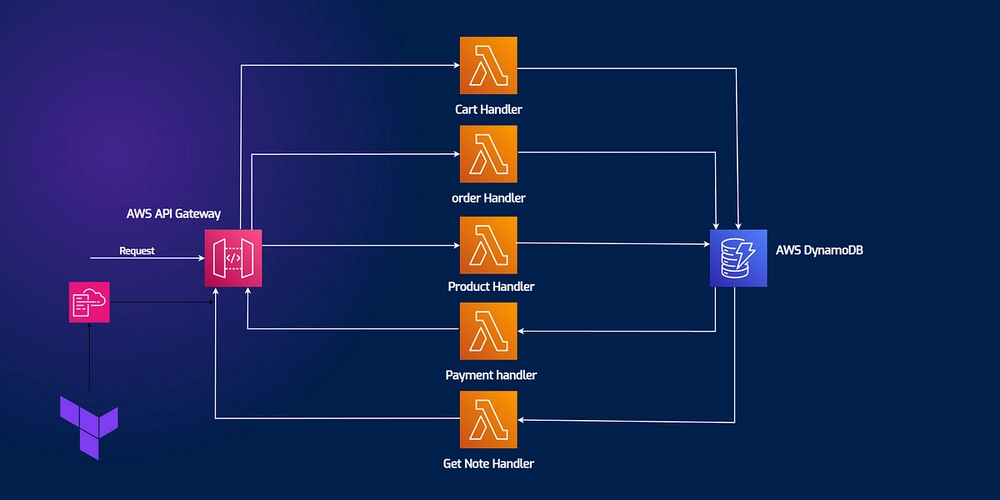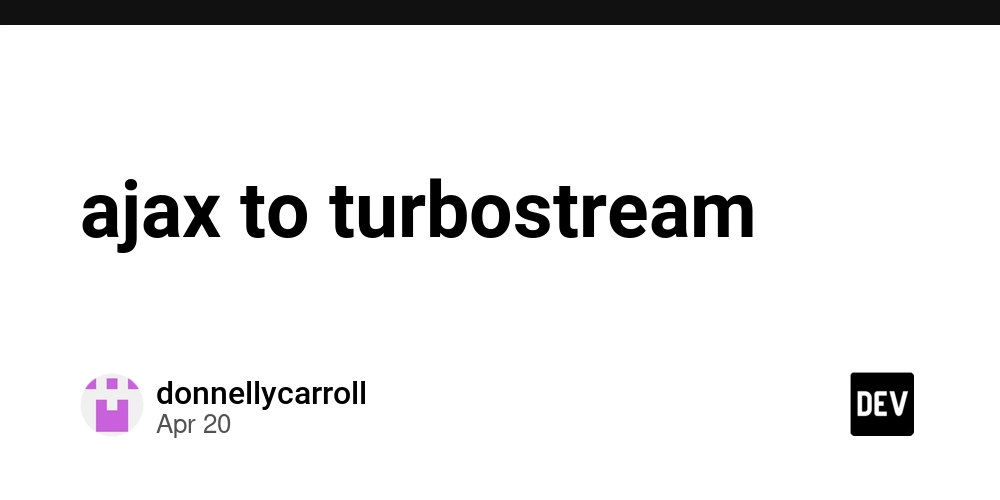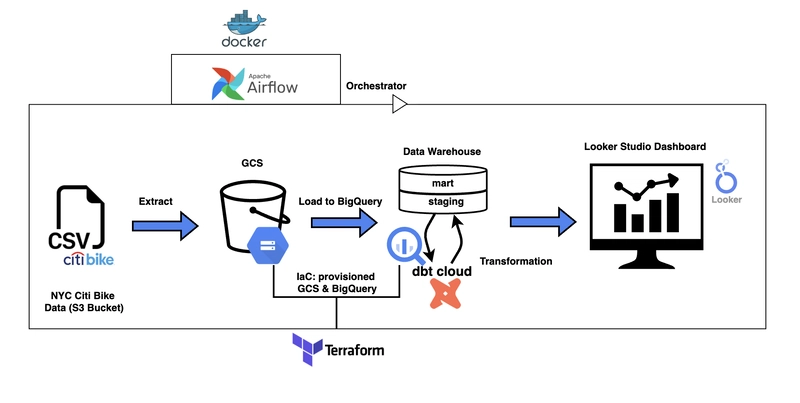Building Real-Time Multiplayer Games: JavaScript Networking Techniques & Code Examples
As a best-selling author, I invite you to explore my books on Amazon. Don't forget to follow me on Medium and show your support. Thank you! Your support means the world! Online multiplayer gaming has transformed how we play and interact with others in virtual worlds. Creating these experiences requires specialized knowledge of networking, state management, and performance optimization. In this article, I'll explore the essential techniques for building real-time multiplayer games with JavaScript, complete with practical code examples. WebSocket Communication WebSockets form the foundation of most real-time multiplayer games, providing full-duplex communication channels between clients and servers. // Server-side WebSocket setup with ws library const WebSocket = require('ws'); const server = new WebSocket.Server({ port: 8080 }); server.on('connection', (socket) => { console.log('Client connected'); socket.on('message', (message) => { // Parse incoming messages const data = JSON.parse(message); // Broadcast to all clients server.clients.forEach(client => { if (client.readyState === WebSocket.OPEN) { client.send(JSON.stringify(data)); } }); }); }); For client-side implementation: // Client-side WebSocket connection const socket = new WebSocket('ws://localhost:8080'); socket.onopen = () => { console.log('Connected to server'); }; socket.onmessage = (event) => { const data = JSON.parse(event.data); // Update game state based on server data updateGameState(data); }; // Send player actions to server function sendPlayerAction(action) { socket.send(JSON.stringify(action)); } For bandwidth optimization, consider using binary protocols like Protocol Buffers or MessagePack instead of JSON. State Synchronization Keeping game state consistent across clients is one of the biggest challenges. I typically use a combination of techniques: // Server maintains authoritative state const gameState = { players: {}, projectiles: [], timestamp: 0 }; // Send state updates at fixed intervals setInterval(() => { const stateUpdate = createStateUpdate(); broadcastToClients(stateUpdate); }, 50); // 20 updates per second function createStateUpdate() { // Only include data that has changed return { timestamp: Date.now(), players: getChangedPlayerData(), projectiles: gameState.projectiles }; } On the client side, interpolation helps create smooth transitions between state updates: let previousState = null; let currentState = null; let interpolationFactor = 0; function processStateUpdate(update) { previousState = currentState; currentState = update; interpolationFactor = 0; } function renderGameState(deltaTime) { if (!previousState || !currentState) return; // Advance interpolation factor interpolationFactor = Math.min(interpolationFactor + deltaTime / INTERPOLATION_PERIOD, 1); // Interpolate between states for (const playerId in currentState.players) { const prevPos = previousState.players[playerId]?.position || currentState.players[playerId].position; const currentPos = currentState.players[playerId].position; // Linear interpolation between positions const renderPos = { x: prevPos.x + (currentPos.x - prevPos.x) * interpolationFactor, y: prevPos.y + (currentPos.y - prevPos.y) * interpolationFactor }; renderPlayer(playerId, renderPos); } } Input Prediction To create responsive gameplay even with network latency, I implement client-side prediction: // Client-side input handling with prediction const pendingInputs = []; let lastProcessedInput = 0; function processInput(input) { // Apply input locally immediately applyInput(localPlayerState, input); // Remember this input for later reconciliation input.sequence = ++lastProcessedInput; pendingInputs.push(input); // Send to server socket.send(JSON.stringify({ type: 'player_input', input: input })); } function applyInput(playerState, input) { // Move player based on input if (input.up) playerState.y -= playerState.speed; if (input.down) playerState.y += playerState.speed; if (input.left) playerState.x -= playerState.speed; if (input.right) playerState.x += playerState.speed; } // When server state arrives, reconcile differences function handleServerUpdate(serverState) { // Update local state with server authoritative data localPlayerState = serverState.players[myPlayerId]; // Remove inputs that server has already processed pendingInputs = pendingInputs.filter(input => input.sequence > serverState.lastProcessedInput ); // Re-apply remaining inputs pendingInputs.forEach(input => { applyInput(localPlayerState, input); }); } Collision Detection Efficient collision detection is crucial for multiplayer games. Spatial partitioning techniques like quad trees can significantly improve performance:

As a best-selling author, I invite you to explore my books on Amazon. Don't forget to follow me on Medium and show your support. Thank you! Your support means the world!
Online multiplayer gaming has transformed how we play and interact with others in virtual worlds. Creating these experiences requires specialized knowledge of networking, state management, and performance optimization. In this article, I'll explore the essential techniques for building real-time multiplayer games with JavaScript, complete with practical code examples.
WebSocket Communication
WebSockets form the foundation of most real-time multiplayer games, providing full-duplex communication channels between clients and servers.
// Server-side WebSocket setup with ws library
const WebSocket = require('ws');
const server = new WebSocket.Server({ port: 8080 });
server.on('connection', (socket) => {
console.log('Client connected');
socket.on('message', (message) => {
// Parse incoming messages
const data = JSON.parse(message);
// Broadcast to all clients
server.clients.forEach(client => {
if (client.readyState === WebSocket.OPEN) {
client.send(JSON.stringify(data));
}
});
});
});
For client-side implementation:
// Client-side WebSocket connection
const socket = new WebSocket('ws://localhost:8080');
socket.onopen = () => {
console.log('Connected to server');
};
socket.onmessage = (event) => {
const data = JSON.parse(event.data);
// Update game state based on server data
updateGameState(data);
};
// Send player actions to server
function sendPlayerAction(action) {
socket.send(JSON.stringify(action));
}
For bandwidth optimization, consider using binary protocols like Protocol Buffers or MessagePack instead of JSON.
State Synchronization
Keeping game state consistent across clients is one of the biggest challenges. I typically use a combination of techniques:
// Server maintains authoritative state
const gameState = {
players: {},
projectiles: [],
timestamp: 0
};
// Send state updates at fixed intervals
setInterval(() => {
const stateUpdate = createStateUpdate();
broadcastToClients(stateUpdate);
}, 50); // 20 updates per second
function createStateUpdate() {
// Only include data that has changed
return {
timestamp: Date.now(),
players: getChangedPlayerData(),
projectiles: gameState.projectiles
};
}
On the client side, interpolation helps create smooth transitions between state updates:
let previousState = null;
let currentState = null;
let interpolationFactor = 0;
function processStateUpdate(update) {
previousState = currentState;
currentState = update;
interpolationFactor = 0;
}
function renderGameState(deltaTime) {
if (!previousState || !currentState) return;
// Advance interpolation factor
interpolationFactor = Math.min(interpolationFactor + deltaTime / INTERPOLATION_PERIOD, 1);
// Interpolate between states
for (const playerId in currentState.players) {
const prevPos = previousState.players[playerId]?.position || currentState.players[playerId].position;
const currentPos = currentState.players[playerId].position;
// Linear interpolation between positions
const renderPos = {
x: prevPos.x + (currentPos.x - prevPos.x) * interpolationFactor,
y: prevPos.y + (currentPos.y - prevPos.y) * interpolationFactor
};
renderPlayer(playerId, renderPos);
}
}
Input Prediction
To create responsive gameplay even with network latency, I implement client-side prediction:
// Client-side input handling with prediction
const pendingInputs = [];
let lastProcessedInput = 0;
function processInput(input) {
// Apply input locally immediately
applyInput(localPlayerState, input);
// Remember this input for later reconciliation
input.sequence = ++lastProcessedInput;
pendingInputs.push(input);
// Send to server
socket.send(JSON.stringify({
type: 'player_input',
input: input
}));
}
function applyInput(playerState, input) {
// Move player based on input
if (input.up) playerState.y -= playerState.speed;
if (input.down) playerState.y += playerState.speed;
if (input.left) playerState.x -= playerState.speed;
if (input.right) playerState.x += playerState.speed;
}
// When server state arrives, reconcile differences
function handleServerUpdate(serverState) {
// Update local state with server authoritative data
localPlayerState = serverState.players[myPlayerId];
// Remove inputs that server has already processed
pendingInputs = pendingInputs.filter(input =>
input.sequence > serverState.lastProcessedInput
);
// Re-apply remaining inputs
pendingInputs.forEach(input => {
applyInput(localPlayerState, input);
});
}
Collision Detection
Efficient collision detection is crucial for multiplayer games. Spatial partitioning techniques like quad trees can significantly improve performance:
class QuadTree {
constructor(boundary, capacity) {
this.boundary = boundary;
this.capacity = capacity;
this.entities = [];
this.divided = false;
this.children = [];
}
insert(entity) {
if (!this.boundary.contains(entity)) return false;
if (this.entities.length < this.capacity && !this.divided) {
this.entities.push(entity);
return true;
}
if (!this.divided) this.subdivide();
for (const child of this.children) {
if (child.insert(entity)) return true;
}
}
subdivide() {
// Create four children quadrants
const x = this.boundary.x;
const y = this.boundary.y;
const w = this.boundary.width / 2;
const h = this.boundary.height / 2;
this.children = [
new QuadTree(new Rect(x, y, w, h), this.capacity),
new QuadTree(new Rect(x + w, y, w, h), this.capacity),
new QuadTree(new Rect(x, y + h, w, h), this.capacity),
new QuadTree(new Rect(x + w, y + h, w, h), this.capacity)
];
this.divided = true;
// Move existing entities to children
for (const entity of this.entities) {
this.insert(entity);
}
this.entities = [];
}
query(range, found = []) {
if (!this.boundary.intersects(range)) return found;
for (const entity of this.entities) {
if (range.contains(entity)) found.push(entity);
}
if (this.divided) {
for (const child of this.children) {
child.query(range, found);
}
}
return found;
}
}
For server-side collision detection:
function detectCollisions() {
const quadTree = new QuadTree(new Rect(0, 0, worldWidth, worldHeight), 10);
// Insert all entities into quad tree
for (const entity of allEntities) {
quadTree.insert(entity);
}
const collisions = [];
// Check collisions for each entity
for (const entity of allEntities) {
// Create a range slightly larger than the entity
const range = new Rect(
entity.x - entity.radius,
entity.y - entity.radius,
entity.radius * 2,
entity.radius * 2
);
// Find potential collision candidates
const candidates = quadTree.query(range);
// Check actual collisions
for (const other of candidates) {
if (entity === other) continue;
if (checkCollision(entity, other)) {
collisions.push([entity, other]);
}
}
}
return collisions;
}
Authority Delegation
I've found the best approach is using an authoritative server model while giving clients limited authority for non-critical elements:
// Server-side: Authoritative movement validation
function validateMovement(playerId, newPosition) {
const player = players[playerId];
const lastPosition = player.position;
// Calculate maximum possible distance based on time and speed
const elapsedTime = Date.now() - player.lastUpdateTime;
const maxDistance = player.speed * elapsedTime / 1000;
// Calculate actual distance moved
const distanceMoved = distance(lastPosition, newPosition);
if (distanceMoved > maxDistance * 1.1) { // 10% tolerance
console.log(`Invalid movement detected for player ${playerId}`);
// Correct the player's position
return false;
}
return true;
}
// Client-side: Handle local effects and animations
function handleNonCriticalEffects(action) {
// Client can play sounds, create particles, etc.
if (action.type === 'jump') {
playJumpSound();
createDustParticles(action.position);
}
}
Room Management
Managing game rooms efficiently is essential for matchmaking and scaling:
class GameRoomManager {
constructor() {
this.rooms = new Map();
this.playerToRoom = new Map();
}
createRoom(options = {}) {
const roomId = generateUniqueId();
const room = {
id: roomId,
players: new Map(),
state: 'waiting', // waiting, playing, ended
maxPlayers: options.maxPlayers || 8,
gameOptions: options
};
this.rooms.set(roomId, room);
return roomId;
}
joinRoom(roomId, player) {
const room = this.rooms.get(roomId);
if (!room) {
throw new Error('Room not found');
}
if (room.state !== 'waiting') {
throw new Error('Cannot join a game in progress');
}
if (room.players.size >= room.maxPlayers) {
throw new Error('Room is full');
}
room.players.set(player.id, player);
this.playerToRoom.set(player.id, roomId);
// Notify other players about new joinee
this.broadcastToRoom(roomId, {
type: 'player_joined',
playerId: player.id,
playerInfo: player.publicInfo
});
// Check if room is full and should start
if (room.players.size === room.maxPlayers) {
this.startGame(roomId);
}
return room;
}
leaveRoom(playerId) {
const roomId = this.playerToRoom.get(playerId);
if (!roomId) return;
const room = this.rooms.get(roomId);
room.players.delete(playerId);
this.playerToRoom.delete(playerId);
// Notify others
this.broadcastToRoom(roomId, {
type: 'player_left',
playerId: playerId
});
// Clean up empty rooms
if (room.players.size === 0) {
this.rooms.delete(roomId);
}
}
broadcastToRoom(roomId, message) {
const room = this.rooms.get(roomId);
if (!room) return;
for (const player of room.players.values()) {
player.send(message);
}
}
startGame(roomId) {
const room = this.rooms.get(roomId);
if (!room) return;
room.state = 'playing';
room.startTime = Date.now();
// Initialize game state
const initialGameState = createInitialGameState(room);
// Notify all players game is starting
this.broadcastToRoom(roomId, {
type: 'game_started',
initialState: initialGameState
});
// Start game loop for this room
startGameLoop(roomId);
}
}
Delta Compression
Reducing bandwidth usage is critical for multiplayer games. Delta compression dramatically reduces the data sent over the network:
// Server-side: Send only what changed
let lastSentState = {};
function createDeltaUpdate() {
const currentState = getFullGameState();
const delta = {};
let hasChanges = false;
// Compare with last sent state
for (const playerId in currentState.players) {
if (!lastSentState.players?.[playerId] ||
hasPlayerChanged(currentState.players[playerId], lastSentState.players[playerId])) {
if (!delta.players) delta.players = {};
delta.players[playerId] = currentState.players[playerId];
hasChanges = true;
}
}
// Add removed players
for (const playerId in lastSentState.players || {}) {
if (!currentState.players[playerId]) {
if (!delta.removedPlayers) delta.removedPlayers = [];
delta.removedPlayers.push(playerId);
hasChanges = true;
}
}
// Same for other game objects...
lastSentState = JSON.parse(JSON.stringify(currentState)); // Deep copy
// Add timestamp
delta.timestamp = Date.now();
return hasChanges ? delta : null;
}
// Client-side: Apply delta updates
function applyDeltaUpdate(delta) {
// Update players
if (delta.players) {
for (const playerId in delta.players) {
gameState.players[playerId] = {
...gameState.players[playerId],
...delta.players[playerId]
};
}
}
// Remove players
if (delta.removedPlayers) {
for (const playerId of delta.removedPlayers) {
delete gameState.players[playerId];
}
}
// ... handle other game objects
gameState.timestamp = delta.timestamp;
}
Lag Compensation
To create a fair experience despite varying connection qualities, I implement lag compensation techniques:
// Server-side: Store position history for lag compensation
const HISTORY_LENGTH = 1000; // ms
class Player {
constructor(id) {
this.id = id;
this.positionHistory = [];
// Other player properties
}
updatePosition(position, timestamp) {
this.currentPosition = position;
// Record position in history
this.positionHistory.push({
position: {...position},
timestamp
});
// Remove old history entries
const cutoffTime = timestamp - HISTORY_LENGTH;
while (this.positionHistory.length > 0 && this.positionHistory[0].timestamp < cutoffTime) {
this.positionHistory.shift();
}
}
getPositionAt(timestamp) {
// Find position at or just before the requested time
for (let i = this.positionHistory.length - 1; i >= 0; i--) {
if (this.positionHistory[i].timestamp <= timestamp) {
return this.positionHistory[i].position;
}
}
// Fall back to oldest position if nothing found
return this.positionHistory.length > 0
? this.positionHistory[0].position
: this.currentPosition;
}
}
// When processing a shot from a player with latency
function processShot(playerId, shotData) {
const shooter = players.get(playerId);
// Calculate timestamp when the shot actually happened on client
const clientTimestamp = shotData.timestamp;
const latency = playerLatencies.get(playerId) || 0;
const serverTimestamp = Date.now();
const adjustedTimestamp = serverTimestamp - latency;
// Get positions of all players at that time
const playerPositions = new Map();
for (const [id, player] of players) {
playerPositions.set(id, player.getPositionAt(adjustedTimestamp));
}
// Check for hits using historical positions
const hits = calculateHits(shotData, playerPositions);
// Process hits
for (const hitPlayerId of hits) {
damagePlayer(hitPlayerId, shotData.damage);
}
}
Network Monitoring
Adapting to varying network conditions improves the player experience:
// Client-side network quality monitoring
class NetworkMonitor {
constructor() {
this.pingSamples = [];
this.maxSamples = 10;
this.lastPingTime = 0;
this.averagePing = 0;
this.packetLoss = 0;
this.jitter = 0;
this.qualityLevel = 'unknown';
}
sendPing() {
this.lastPingTime = performance.now();
socket.send(JSON.stringify({
type: 'ping',
timestamp: this.lastPingTime
}));
}
receivePong(serverTimestamp) {
const now = performance.now();
const rtt = now - this.lastPingTime;
// Add to ping samples
this.pingSamples.push(rtt);
if (this.pingSamples.length > this.maxSamples) {
this.pingSamples.shift();
}
// Calculate average ping
this.averagePing = this.pingSamples.reduce((sum, ping) => sum + ping, 0) / this.pingSamples.length;
// Calculate jitter
if (this.pingSamples.length > 1) {
let jitterSum = 0;
for (let i = 1; i < this.pingSamples.length; i++) {
jitterSum += Math.abs(this.pingSamples[i] - this.pingSamples[i-1]);
}
this.jitter = jitterSum / (this.pingSamples.length - 1);
}
// Determine quality level
this.updateQualityLevel();
// Adapt game settings based on quality
this.adaptGameSettings();
}
updateQualityLevel() {
if (this.averagePing < 50 && this.jitter < 10) {
this.qualityLevel = 'excellent';
} else if (this.averagePing < 100 && this.jitter < 20) {
this.qualityLevel = 'good';
} else if (this.averagePing < 200 && this.jitter < 50) {
this.qualityLevel = 'fair';
} else {
this.qualityLevel = 'poor';
}
}
adaptGameSettings() {
// Adapt prediction time
predictionFactor = Math.min(1.0, this.averagePing / 100);
// Adapt interpolation buffer
INTERPOLATION_PERIOD = Math.max(50, this.averagePing * 1.5);
// Adapt update rate
if (this.qualityLevel === 'poor') {
clientUpdateRate = 10; // 10 updates per second
} else if (this.qualityLevel === 'fair') {
clientUpdateRate = 20;
} else {
clientUpdateRate = 30;
}
}
}
Security Measures
Preventing cheating is crucial for a fair multiplayer experience:
// Server-side: Validate all client actions
function validateAction(playerId, action) {
const player = players.get(playerId);
// Validate action is possible
if (action.type === 'shoot') {
// Check weapon cooldown
if (player.lastShotTime && Date.now() - player.lastShotTime < player.weapon.cooldown) {
console.log(`Rejected rapid fire from ${playerId}`);
return false;
}
// Check ammo
if (player.ammo <= 0) {
console.log(`Rejected no-ammo shot from ${playerId}`);
return false;
}
// Update player state
player.lastShotTime = Date.now();
player.ammo--;
return true;
}
// Add validation for other action types
return true;
}
// Client-side: JWT authentication
async function authenticatePlayer(username, password) {
const response = await fetch('/api/login', {
method: 'POST',
headers: {
'Content-Type': 'application/json'
},
body: JSON.stringify({ username, password })
});
if (!response.ok) {
throw new Error('Authentication failed');
}
const { token } = await response.json();
// Store token
localStorage.setItem('gameAuthToken', token);
// Use token for WebSocket authentication
const socket = new WebSocket(`ws://game.example.com/socket?token=${token}`);
return socket;
}
// For message encryption, add a layer of encryption on top of WebSocket
function sendEncryptedMessage(socket, message) {
const messageString = JSON.stringify(message);
const encryptedMessage = CryptoJS.AES.encrypt(messageString, SECRET_KEY).toString();
socket.send(encryptedMessage);
}
function decryptMessage(encryptedMessage) {
const bytes = CryptoJS.AES.decrypt(encryptedMessage, SECRET_KEY);
const decryptedString = bytes.toString(CryptoJS.enc.Utf8);
return JSON.parse(decryptedString);
}
Building real-time multiplayer games with JavaScript is complex but rewarding. The techniques covered here—WebSockets, state synchronization, input prediction, collision detection, authority delegation, room management, delta compression, lag compensation, network monitoring, and security measures—provide a solid foundation for creating engaging multiplayer experiences.
I've found that successful multiplayer game development requires constant iteration and fine-tuning. Network conditions vary wildly, and player behaviors are unpredictable. The best games adapt to these challenges while maintaining consistent, fair gameplay.
By implementing these techniques appropriately for your specific game requirements, you can create multiplayer experiences that feel responsive and fair regardless of network conditions.
101 Books
101 Books is an AI-driven publishing company co-founded by author Aarav Joshi. By leveraging advanced AI technology, we keep our publishing costs incredibly low—some books are priced as low as $4—making quality knowledge accessible to everyone.
Check out our book Golang Clean Code available on Amazon.
Stay tuned for updates and exciting news. When shopping for books, search for Aarav Joshi to find more of our titles. Use the provided link to enjoy special discounts!
Our Creations
Be sure to check out our creations:
Investor Central | Investor Central Spanish | Investor Central German | Smart Living | Epochs & Echoes | Puzzling Mysteries | Hindutva | Elite Dev | JS Schools
We are on Medium
Tech Koala Insights | Epochs & Echoes World | Investor Central Medium | Puzzling Mysteries Medium | Science & Epochs Medium | Modern Hindutva









































































































































































![[The AI Show Episode 144]: ChatGPT’s New Memory, Shopify CEO’s Leaked “AI First” Memo, Google Cloud Next Releases, o3 and o4-mini Coming Soon & Llama 4’s Rocky Launch](https://www.marketingaiinstitute.com/hubfs/ep%20144%20cover.png)



























































































































![[DEALS] The All-in-One Microsoft Office Pro 2019 for Windows: Lifetime License + Windows 11 Pro Bundle (89% off) & Other Deals Up To 98% Off](https://www.javacodegeeks.com/wp-content/uploads/2012/12/jcg-logo.jpg)


















































































































































_Andreas_Prott_Alamy.jpg?width=1280&auto=webp&quality=80&disable=upscale#)

































































































![What features do you get with Gemini Advanced? [April 2025]](https://i0.wp.com/9to5google.com/wp-content/uploads/sites/4/2024/02/gemini-advanced-cover.jpg?resize=1200%2C628&quality=82&strip=all&ssl=1)











![Apple Shares Official Trailer for 'Long Way Home' Starring Ewan McGregor and Charley Boorman [Video]](https://www.iclarified.com/images/news/97069/97069/97069-640.jpg)
![Apple Watch Series 10 Back On Sale for $299! [Lowest Price Ever]](https://www.iclarified.com/images/news/96657/96657/96657-640.jpg)
![EU Postpones Apple App Store Fines Amid Tariff Negotiations [Report]](https://www.iclarified.com/images/news/97068/97068/97068-640.jpg)


































































































































